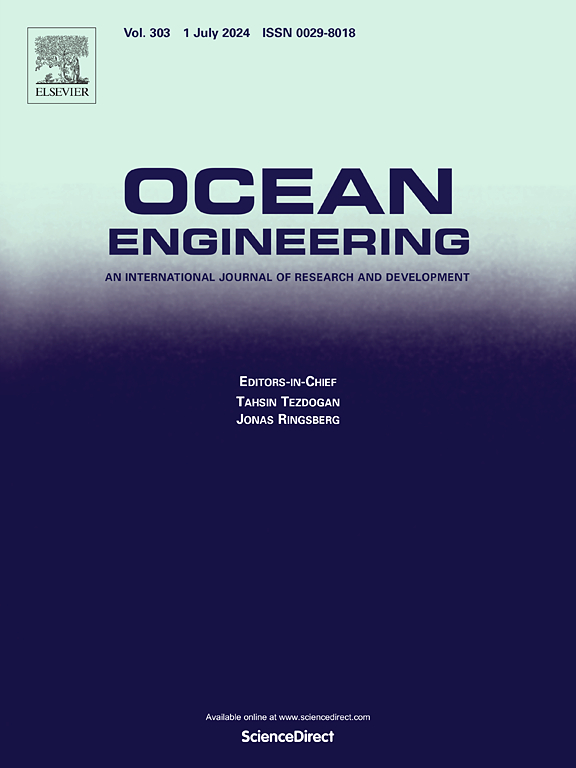Helmholtz-type resonator with increased tunability and reduced viscous loss with application to wave energy converters
IF 5.5
2区 工程技术
Q1 ENGINEERING, CIVIL
引用次数: 0
Abstract
Wave-energy converters such as Oscillating Water Columns (OWCs) are designed to resonate at ocean-wave frequencies to extract renewable energy, but the low frequencies of the energetic waves demand large, expensive devices. To resolve this predicament, smaller-sized Helmholtz OWCs (H-OWCs) were designed. Their small sizes are achieved by reducing the cross-sectional area of their entrance sections. However, this leads to viscous losses at the transition between an H-OWC’s entrance and main sections. Moreover, an H-OWC is difficult to tune due to its fixed geometry. This paper proposes a modified H-OWC, called an I-OWC. Its main innovation is to use an “insert” placed in a chamber to reduce the cross-sectional area of the entrance section, avoiding the transition in an H-OWC to reduce vortex damping. Another benefit of the I-OWC is an increased tunability via changing the length of the insert in the chamber. A model of I-OWC is designed semi-analytically; the method is validated by wave flume tests. A conceptual design of a full-scale I-OWC is then proposed. In a broader sense, the design provides an alternative approach to tuning the frequency of a general Helmholtz-type resonating cavity.

亥姆霍兹型谐振器,提高了可调性,减少了粘滞损失,应用于波能转换器
波浪能转换器,如振荡水柱(OWCs),被设计成与海浪频率共振以提取可再生能源,但低频的高能海浪需要大型昂贵的设备。为了解决这一困境,设计了较小尺寸的亥姆霍兹光阱(H-OWCs)。它们的小尺寸是通过减少入口截面的横截面积来实现的。然而,这会导致H-OWC入口和主段之间的过渡产生粘滞损失。此外,由于其固定的几何形状,H-OWC难以调谐。本文提出了一种改进的H-OWC,称为I-OWC。它的主要创新之处在于使用放置在腔室中的“插入物”来减少入口截面的横截面积,避免了H-OWC中的过渡,以减少涡阻尼。I-OWC的另一个优点是通过改变腔室中插入物的长度来增加可调性。采用半解析法设计了I-OWC模型;通过波浪水槽试验验证了该方法的有效性。然后提出了一个全尺寸I-OWC的概念设计。从更广泛的意义上说,该设计提供了一种替代方法来调谐一般亥姆霍兹型谐振腔的频率。
本文章由计算机程序翻译,如有差异,请以英文原文为准。
求助全文
约1分钟内获得全文
求助全文
来源期刊

Ocean Engineering
工程技术-工程:大洋
CiteScore
7.30
自引率
34.00%
发文量
2379
审稿时长
8.1 months
期刊介绍:
Ocean Engineering provides a medium for the publication of original research and development work in the field of ocean engineering. Ocean Engineering seeks papers in the following topics.
 求助内容:
求助内容: 应助结果提醒方式:
应助结果提醒方式:


